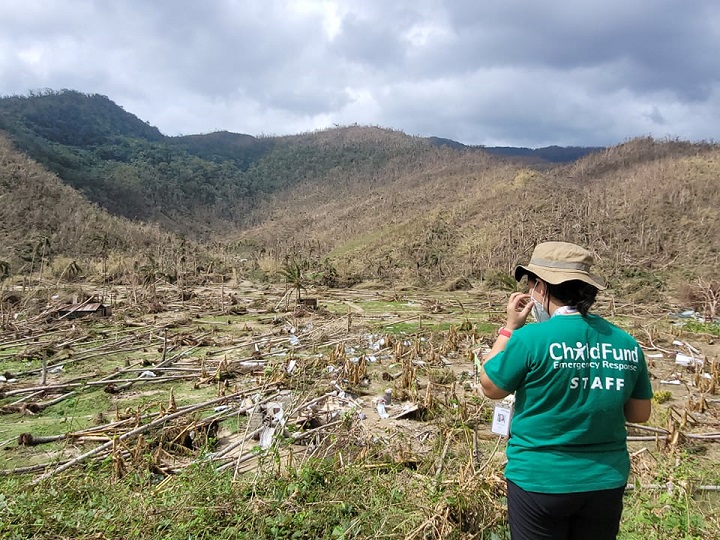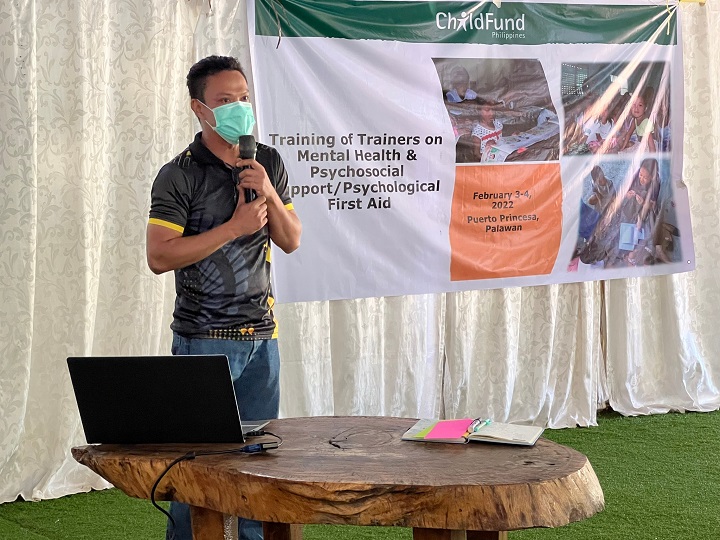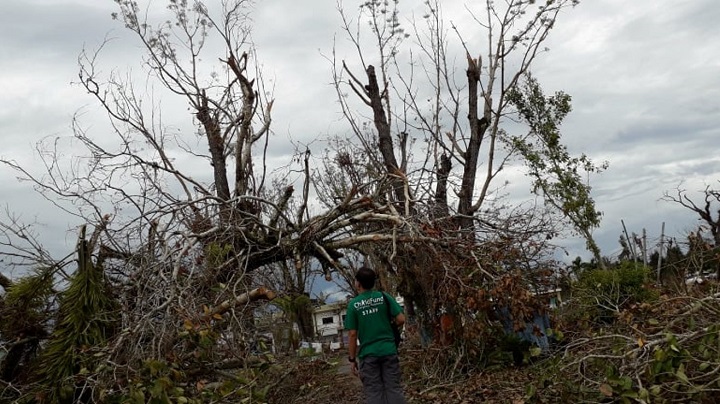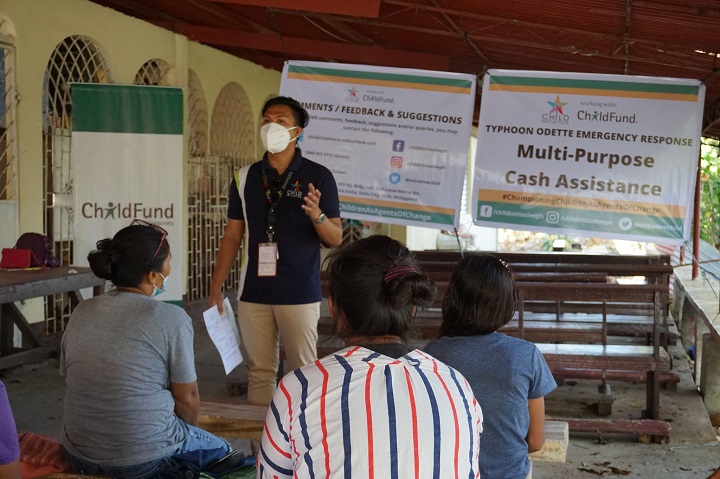
Super Typhoon Odette (international name: Typhoon Rai) was the 15th and strongest (Category 5) that hit the Philippines in 2021. Bohol, an island-province at the southern portion of the Visayas group of islands, was among the hardest-hit provinces after the typhoon exited the country two days after it made its first landfall on December 16, 2021. The typhoon brought torrential rains, violent winds, floods and storm surges along its path as it made nine landfalls across the Visayas and Mindanao islands.
After the calamity, the Municipality of San Miguel, a small town in Bohol, was having a hard time not just dealing with the physical impact of the typhoon but also on properly processing the anxiety and trauma among town folks across its 18 barangays.
“Our LGU (local government unit) officers could not handle pleads for relief because they were also victims of the calamity,” Municipal Disaster Risk Reduction and Management Officer Ma. Belen Hinacay recalls. Thus, they all felt relieved when ChildFund Philippines reached out to offer assistance.
“We were not just counting on monetary support, and ChildFund provided us with something that was equally important that is rarely included as part of the typical relief packages of humanitarian organizations. And that assistance would remain with us even for many more typhoons and calamities to come,” she adds.
San Miguel was among the typhoon devastated areas where ChildFund rolled out its signature Mental Health and Psycho-Social Support (MHPSS) program. Through the initiative, experts from ChildFund train local government officials and personnel, teachers, and volunteers in assessing and processing mental and emotional stress of distressed children (and adults). The program is strategically and creatively designed to be a workshop where subjects and activities would be guided to deal with personal issues and psychosocial stresses and other traumatic experiences caused by extreme hazard events (such as strong typhoons, earthquakes, etc.).
“It was a big help. The first batch of trainees from the municipality offices then trained barangay leaders in all 18 barangays. Soon, MHPSS was able to help more people across the town. Since then, we have observed that most of the calamity victims were going out again and trying to go on with life despite the odds,” Hinacay shares.
Disaster response in Palawan
Puerto Princesa City in Palawan was another area that were among the beneficiaries of ChildFund Philippines’ disaster response initiatives. City Disaster Risk Reduction and Management Officer Earl Timbancaya says they have learned a lot from the organization.
“The organization provided some assistance to help our people fix or rebuild their damaged houses. But more importantly, ChildFund trained us to help the calamity victims to overcome the fear and anxiety they were having after the disaster,” he says.

For Tirso Portillas Segundo, City Social Welfare and Development Officer of Puerto Princesa City, being trained to be a facilitator of MHPSS has been enriching. “I’ve been assisting calamity victims in my work, but learning to conduct a workshop to help children and people overcome their emotions is something new and fulfilling. We were taught not just to facilitate but also to prepare our materials and motivate calamity victims,” he shares.
Kagawad (council member) Ronald Olorga of Barangay Babuyan in Puerto Princesa City and an Indigenous People Mandatory Representative also expressed appreciation to ChildFund Philippines’ typhoon assistance efforts. He, along with families in his village, was a beneficiary of the MHPSS intervention and Shelter Kit assistance from the organization.
“It would take so much for us to fully recover but we are thankful for the support so we can restart,” Olorga says. “Right now, our biggest challenge is getting our livelihood back. About 90% of coconut trees we rely on for our copra (dried coconut meat) were uprooted. Most of our fishermen’s boats were also damaged. But we are still fighting, determined to go on with our lives, thanks to the MHPSS program.”
Assistance to typhoon victims
ChildFund Philippines was quick to launch its Typhoon Odette response in December 2021. The project aims to reach more than 24,000 individuals or 4,500 families across 36 barangays in the program areas of San Joaquin in Iloilo and Bacolod City in Negros Occidental, along with non-program areas of Puerto Princesa City in Palawan and Bohol.

“We started monitoring the projected track of Typhoon Odette before it made a landfall, keeping watch of existing program areas that might be hit. We then asked our local partners in those areas to prepare accordingly,” says Erwin Galido, Disaster Risk Management Specialist at ChildFund Philippines. “Seeing the actual scale of devastation after the typhoon, we saw a number of hard-hit provinces outside of our program areas that were being left out of immediate humanitarian assistance. We then deployed rapid assessment teams to two of these provinces and coordinated with the concerned local government units (LGUs) and local CSOs in those areas to help us identify villages where we could intervene.”
The response spanned from immediate relief to recovery phases and will be completed by the end of August 2022. ChildFund completed Mental Health and Psychosocial Support (MHPSS) sessions and directly reached about 3,600 children and adults in seven municipalities and 20 barangays in Palawan and Bohol; provided Multi-Purpose Cash Assistance (MPCA) and immediate shelter/livelihood repair to about 500 families in San Joaquin, Iloilo and Bacolod City in Negros Occidental; and distributed shelter kit assistance to 100 families in Puerto Princesa City. The organization also provided learning and health kits to about 2,100 affected learners in San Joaquin and Bacolod City, while immediate livelihood assistance was extended to 275 families in San Joaquin.
Helping each other
Overall, Typhoon Odette and the outpour of humanitarian support from the government, local and international non-government organizations like ChildFund Philippines, and the private sector reinforced the importance of the collective responsibility to support each other and rise together.

“There are four important lessons we at ChildFund and our partners from the public and private sectors realized from Typhoon Odette. First, MHPSS and similar interventions should be included as a key component of any immediate response to disasters. Second, there is a need for LGUs to recalibrate their disaster preparedness and capacity to deal with worst-case scenarios. Third, we need to help families increase their awareness and level of preparedness to disasters. And lastly, coordination and collaboration is a must among humanitarian organizations, donors and Local Government Units to improve complementation of resources and interventions and to reach more people in need,” Galido said.
ChildFund commits to keeping such interventions during massive disasters. The organization is confident that its programs are appropriately designed and well-targeted to benefit children by helping them, their families and their communities overcome the economic, mental, and emotional stress brought about by calamities.
“Disaster response interventions like these serve as embodiment of ChildFund’s main message, ‘We need each other.’ Our organization could not have implemented our relief and response efforts without the cooperation of other local organizations, LGUs, and private groups. As we observe World Humanitarian Day, may these lessons be an additional guidance for everyone—those who are affected by disasters, the governments, the private sector, and humanitarian organizations—so we can all help make a difference to more lives, especially those in need,” Galido concluded.

